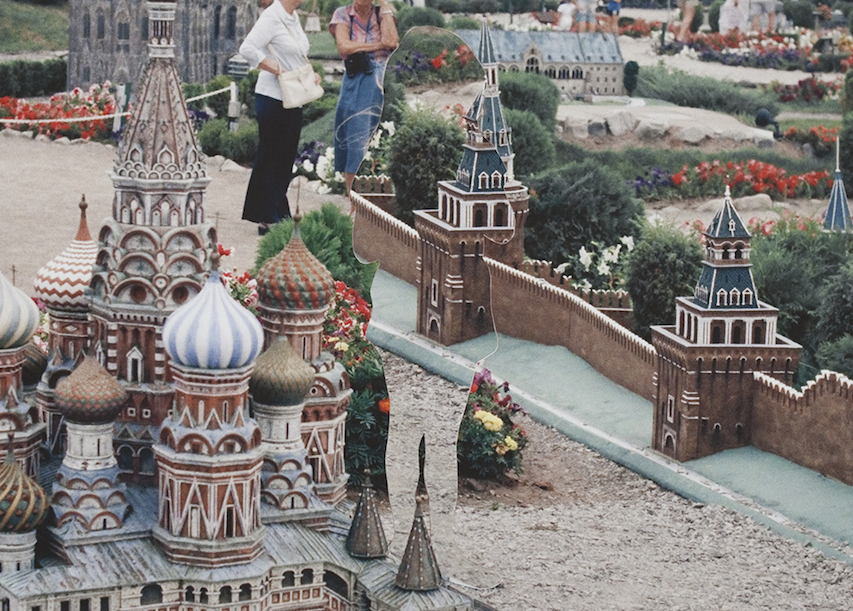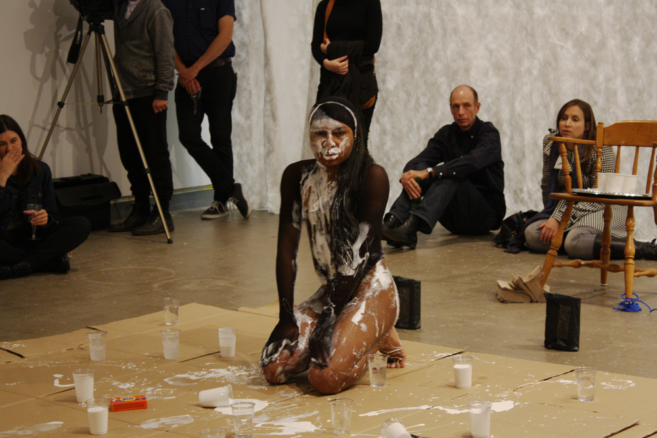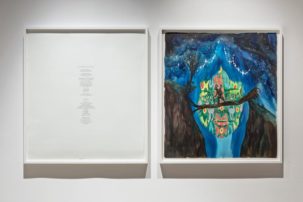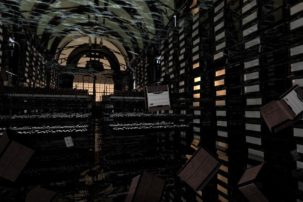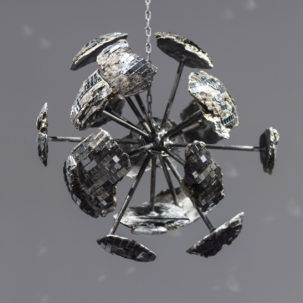Early in her heartbreaking graphic novel-memoir Fatherland, Nina Bunjevac writes of her mother’s strategic forgetting, her habit of blocking out crucial moments of her family’s history: “Things like our early childhood diseases, vaccinations, our first steps, first words…ask about any of these and she’ll draw a blank. Ask about celebrity gossip and she’s an expert. I used to think it was just plain careless.” Bunjevac’s mother built barriers in her memory to cope with the legacies of her husband’s rage—both its political and intimate manifestations—and Fatherland recounts a moment that swims on the edges of Bunjevac’s own consciousness: her father’s death in 1977 due to his orchestrated bombing of a Yugoslavian embassy in Toronto. In Fatherland, Bunjevac recreates old family photographs in densely rendered monochromatic drawings, using these domestic records as prompts for storytelling where her own memory falls short. Indeed, the relationship between personal memory and the documents of family history is an imperfect one (are my memories sustained, refuted or created by the photos in my family home?), and in “The Disappeared” at Gallery 44 this indexical slippage is explored to greater depth.
“The Disappeared” is titled after a photo-based collage series by Tatiana Grigorenko, which hangs framed in small clusters in the main space of Gallery 44. All the well-worn scenes of a family photo album are here: the staged group shots of ballet recitals and get-togethers with the relatives, keen elementary school portraits, posed vacation snapshots with roadside monuments. Yet a shift occurs across many of these images—there’s an awkward change in tone, a dislocated shape that seems out of place. Reprinting her personal family photos, most of which were taken in the years following her family’s immigration to the United States from the USSR in 1978, on cotton-rag paper, Grigorenko removed her childhood self from each of them. Her body is either excised carefully, replaced with an imperfect swath of the duplicated photo or covered in a violent smear of paint. The resulting disjunction creates a sense of visual “amiss-ness,” to borrow a phrase from Alison Cooley’s accompanying essay, an uncanny ripple that calls attention to the very texture of the memory captured on film—and what has been forgotten in its wake.
Displayed in the accompanying space, Zoë Heyn-Jones’s 16 mm film Atitlán also pushes at the indexical and material limits of a familiar record of childhood: the quintessential vacation home movie. Transferred from a reel of single-frame Super 8 footage, Atitlán is a choppy, sporadic record of a drive from Guatemala City to Santiago Atitlán in the Guatemalan highlands. Heyn-Jones lived in Guatemala as a child with her family, and Atitlán perhaps approximates blurred memories from the passenger seat: charting not a linear trip to a prescribed destination, but a textural, frenetic landscape where semi-obscured details (road signs, buses, trees, water droplets on the window) become random points of fixation for a young traveller trying—and failing—to capture it all.
Yet the scratchy film and disoriented countryside allude to a context beyond Heyn-Jones’s familial one. Home to a large Indigenous Mayan population, Santiago Atitlán was the site of a massacre at the hands of the Guatemalan Army during a civil war that spanned 1960 to 1996. In 1990, 14 unarmed civilians were killed (and 21 others wounded) in Santiago Atitlán, only a few neighbouring towns from where a young Heyn-Jones was playing with her friends. Given this violent history—one that remains central to Heyn-Jones’s ongoing creative practice and research—the material specificity of Atitlán becomes disorienting. While grainy 16 mm frames often carry a cultural nostalgia for those “better days” before the technology’s obsolescence (undoubtedly helped along by that comforting whirr of the EIKI projector), as Heyn-Jones’s car weaves its way closer to this wounded place, the scratches and pockmarks that litter Atitlán’s surface seem as traumatic as they are sentimental.
The damage done to Grigorenko’s family photos has a political history as well. Interested in modes of censorship prevalent in the former USSR, Grigorenko’s photo-collage practice mimics a longstanding tradition in state-sanctioned forgetting. In an eerie moment of research serendipity, working on The Disappeared led Grigorenko to a family photo of her infant self in the arms of her grandmother and grandfather. The latter, Petro Grigorenko, had been a well-known Soviet general turned political dissident and human rights activist, and the image had been reproduced in his memoirs. However, an earlier iteration of the same photograph reveals Oleg, Petro’s adult son with Down Syndrome, standing to his right. In Gallery 44, these two images are framed side by side, and their presence casts a long shadow across Grigorenko’s own doctored images—revealing the machinations of historical revisionism on both national and domestic levels. Grigorenko is unsure who removed Oleg from the officially reproduced version of her grandfather’s photograph, yet his is not the first “undesirable” body made invisible to historical memory, and will by no means be the last.
State forgetting and personal forgetting are woven together throughout Heyn-Jones’s and Grigorenko’s work, they are given material presence and texture. In Grigorenko’s The Disappeared, images that seem easily understood as tropes of familial nostalgia bristle with strangeness when their extracted edges become obvious to new eyes. While Grigorenko is gone, her presence is still felt: in Kremlin, the shape of a young girl swims into view in a miniature village at Niagara Falls, refracted against her surroundings like an off-kilter mirror. Faint strands of blonde hair remain, having narrowly escaped the artist’s exacting cuts. In Ballet, a fellow dancer is reproduced over Grigorenko in her tutu, a rudimentary copy-and-paste job not immediately recognizable in the sea of smiling faces.
And while her drive from Guatemala City to Santiago Atitlán is no straightforward vacation diary, nor does it directly expound upon the facts of a local genocide, Heyn-Jones’s Atitlán documents memory and history in a different kind of way. Because she refuses to overdetermine its route and the landmarks within it, this fragmented landscape retains all the complexities of its political, Indigenous and intimate histories. Atitlán enacts remembering and forgetting as one in the same. For hazy memories of a childhood in Guatemala, the uneasy waver between nostalgia and disorientation in Heyn-Jones’s so-called family road trip could evoke the intense ambivalence felt living on the edge of a massacre without—at the time—fully understanding its significance.
Can you feel the absence of someone—or someplace—you don’t remember? In Fatherland, Nina Bunjevac created a hazy portrait of a man her family would rather forget—accumulating anecdotes from reluctant relatives, histories of a politically fraught Yugoslavia, and otherwise cheerful family photographs in an attempt to understand the void her father left in her family. Staring at Grigorenko’s photo collages in The Disappeared, I’m also left wondering about those figures left behind as they reach out towards her absence. In Swimming, Grigorenko’s father extends his arms forward, waist-deep in water. With his daughter removed from this image of a swimming lesson, he is left performing some kind of strange invocation, perhaps a sombre dance. As Grigorenko is excised from her father’s arms, and as Heyn-Jones’s camera jolts along a frenetic Guatemalan landscape, these material modes of remembering/forgetting bring a disruptive texture to familial and state history, and the rest of us are left behind to navigate their cracks and tears.

